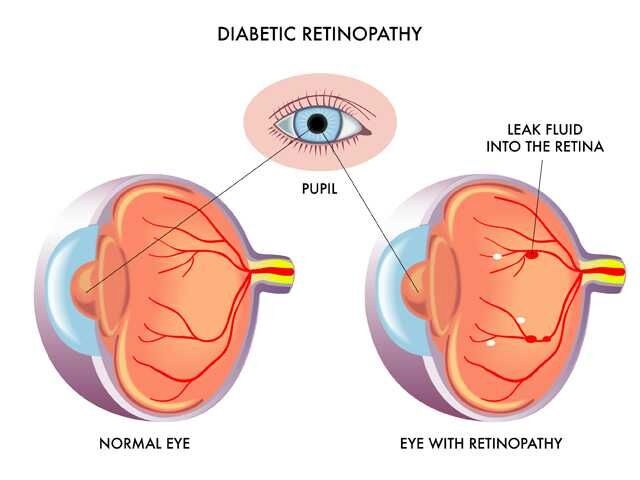News • Don't turn a blind eye
Annual dilated eye exams key in preventing diabetic eye disease
Diabetic eye disease is the leading cause of blindness among people ages 40 to 60.
The longer you have diabetes, the greater your likelihood of developing vision problems increases. Keeping blood sugar, blood pressure and cholesterol levels under control can help people with diabetes maintain good eye health. They must also have a dilated eye exam once a year, says Dr. Malav Joshi, an ophthalmologist at The Krieger Eye Institute. “Diabetic eye disease is preventable, and you can take steps to slow it down or even reverse it by taking care of your diabetes, your blood pressure and your cholesterol,” Joshi says.
A dilated exam allows eye doctors to check the inside of the eye for things like abnormal blood vessels, retinal swelling and nerve tissue damage. “It also helps us see your cataracts a little better,” Joshi says. A dilated eye exam can help your doctor identify problems before vision loss occurs, which is important because often there are no warning signs and vision may not be affected when damage first develops, says Joshi, who adds that the rate of blindness among diabetic patients is 20 times higher than that of the general population.

Eye problems that can affect people with diabetes include diabetic retinopathy, diabetic macular edema, glaucoma and cataracts. In the early stages of diabetic retinopathy, the blood vessels can weaken, leak or bleed into the retina; in its later stages, there is growth of abnormal blood vessels that can cause more bleeding and lead to serious vision problems. With diabetic macular edema, fluid or cholesterol leaks out of the blood vessels, causing swelling of the macula, the part of the retina that’s most vital for fine vision. Vision lost due to glaucoma—which affects the optic nerve—cannot be restored, although early detection and treatment with eye drops or surgery can help prevent or slow down vision loss. Diabetes increases the risk of developing a cataract—a clouding of the lens—by twofold, Joshi says.
Joshi stresses that strict control of blood sugar and blood pressure—through medication, a healthy diet and exercise—can help people with diabetes avoid serious vision problems. Ideally, he says, they should strive to keep their A1C level, an indicator of how well you are managing your blood glucose level, below seven percent. People with diabetes should also avoid smoking, as it can contribute to vision problems and other serious health problems such as heart and kidney disease and peripheral neuropathy, which can cause weakness, numbness and pain in your hands and feet.
Source: LifeBridge Health
21.02.2018










